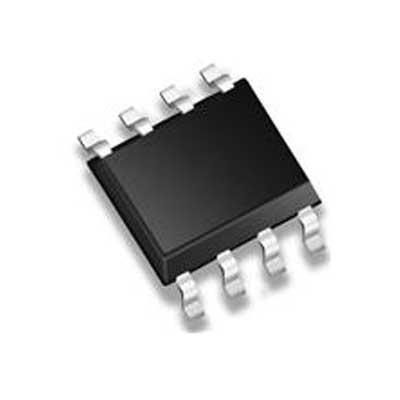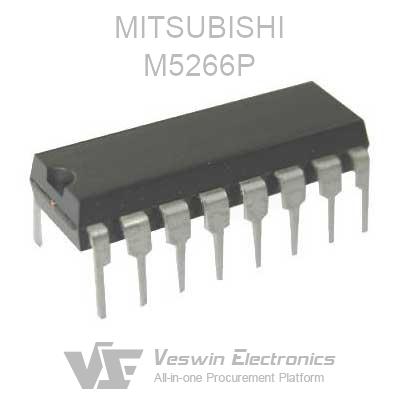Speed control is essential for elevators, wind turbines, cranes, hoists and electric locomotives. Therefore, braking resistors are an integral part of these applications, as they are the most common high power resistors used in electric motor drives to control their speed in industries such as transportation, marine and construction.
Electric trains are mostly accepted over diesel trains because they are recyclable and can also be renewable. Generally, these trains generate a lot of energy when stopping or slowing down, which can be regained or dissipated.
Therefore, a series of braking resistors are integrated in the engine system of the electric trains for braking. Thus, kinetic energy can be converted into electrical energy at the traction motor of the engine system during dynamic train braking. The generated energy can be dissipated in the body of the train through the on-board braking resistor sequence.
Definition of Braking Resistor: A resistor that slows or stops a mechanical system by generating a braking torque is called a braking resistor. These resistors are designed with some specifications such as resistance and average braking power. Including smaller ohmic values of braking resistors will help control the speed of the motor and dissolve more heat.
a. The principle of braking unit: braking unit consists of high-power transistor GTR and its drive circuit. Its function is to discharge the current link capacitor in the specified voltage range can not store or internal braking resistor is too late to consume and make the DC part "over-voltage", need to add external braking components to speed up the consumption of regenerative energy.
b. The principle of braking resistor: motor in the process of decreasing the working frequency, will be in the regenerative braking state, dragging the kinetic energy of the system to feedback to the DC circuit, so that the DC voltage UD rising, and may even reach the dangerous point. Therefore, the energy regenerated to the DC circuit must be consumed to keep the UD within the allowable range. The braking resistor is used to consume this energy.
c. The braking unit + resistor: The braking unit consists of a high-power transistor GTR and its driving circuit. Its function is to provide a path for the discharge current IB flow through the braking resistor.
The following is the action process of the braking unit
a. When the motor is decelerated under the action of external force, the motor runs in a generating state and generates regenerative energy. Its generated three-phase AC electric potential is rectified by the three-phase fully controlled bridge composed of six renewal diodes in the inverter part of the inverter, which causes the DC bus voltage in the inverter to rise continuously.
b, when the DC voltage reaches a certain voltage (brake unit open voltage), the brake unit power switch tube opens, the current flows through the braking resistor.
c, the braking resistor releases heat and absorbs regenerative energy, the motor speed drops, and the DC bus voltage of the inverter decreases.
At this time there is no braking current flowing through the resistor, the braking resistor in the natural heat dissipation, reduce their own temperature.
e, when the DC bus voltage rises again to make the brake unit action, the brake unit will repeat the above process, balance the bus voltage, so that the system operates normally.
Because the brake unit working conditions belong to the short time work, that is, each time the power on time is very short, in the power on time, its temperature rise is far from stable temperature rise; and each time the power on after the interval is longer, in the interval time, its temperature is enough to drop to the same temperature as the ambient temperature, so the rated power of the braking resistor will be greatly reduced, the value is also reduced;.
In addition, because there is only one IGBT, the braking time is ms level, the transient performance index requirements for power tube turn-on and turn-off are low, and even require the turn-off time to be as short as possible to reduce the turn-off pulse voltage and protect the power tube; the control mechanism is also relatively simple and relatively easy to implement. Because of the above advantages, so it is widely used in cranes and other potential energy loads and the need for fast braking but for short-time operating system.
Protect the inverter
Motor in the process of fast stop, due to inertia, will produce a large amount of regenerative energy, if not timely consumption of this part of the regenerative energy, will act directly on the DC circuit part of the inverter, the lighter, the inverter will report a fault, the heavier, it will damage the inverter; the emergence of the braking resistor, a good solution to this problem, to protect the inverter from the harm of motor regenerative energy.
Ensure the power supply electric network
The braking resistor converts the regenerative energy in the rapid braking process of the motor directly into thermal energy, so that the regenerative energy will not be fed back into the power supply network and will not cause voltage fluctuations in the power grid, thus playing a role in ensuring the smooth operation of the power supply network.
The selection of the braking resistor is limited by the maximum allowable current of the inverter-specific energy braking unit, and there is no clear correspondence with the braking unit, whose resistance value is mainly selected according to the size of the required braking torque, and the power is determined according to the resistance value of the resistor and the usage rate. Braking resistor resistance value of the selection of an inviolable principle: should ensure that the current flow through the braking resistor IC is less than the maximum allowable current output capacity of the braking unit, that is: R > 800/Ic.
Where: 800 - the maximum possible DC voltage on the DC side of the inverter Ic - the maximum allowable current of the braking unit. In order to make full use of the capacity of the selected inverter-specific braking unit, the resistance value of the braking resistor is usually selected to be close to the minimum value calculated in the above formula for the most economical, but also to obtain the maximum braking torque, however, this requires a larger brake resistor power.
In some cases, do not need a large braking torque, it is more economical to choose a larger brake resistor resistance value, and therefore can reduce the power of the brake resistor, thereby reducing the cost of purchasing brake resistors, the cost of such a brake unit capacity is not fully utilized.
After selecting the resistance value of the braking resistor, the power value of the braking resistor should be determined, the selection of the power of the braking resistor is relatively cumbersome, it is related to many factors.
The instantaneous power consumed by the braking resistor is the value of power that can be dissipated by the braking resistor for a long period of uninterrupted operation, however, the braking resistor does not work uninterruptedly, and there is a great waste in this selection. In this product, the utilization rate of the braking resistor can be selected, which specifies the short-time operating ratio of the braking resistor. Braking resistor usage rate. In actual use, the braking resistor power can be selected according to the above equation, and also according to the selected braking resistor resistance value and power, in turn, calculate the utilization rate that the braking resistor can withstand, so that the correct setting can be made to avoid overheating and damage to the braking resistor.
The braking resistor power calculated in accordance with the above method is sufficient, and depending on the nature of the load, further derating can be selected.
The so-called non-repetitive braking refers to the dragging system in a long period of time only once deceleration and braking process, so the braking resistor in the period of time only once the process of energy consumption, the power of the braking resistor can be further reduced, the magnitude of the reduction is determined by the impact resistance of the braking resistor and the single deceleration and braking action time.
Without considering the factors of the impact resistance of the braking resistor, in the non-repeating braking system, the power derating of the braking resistor and the relationship between the single deceleration and braking time is shown in "Figure: the relationship between the derating power of the braking resistor and the single braking time"; it can be seen that in the case of braking time less than 10S, the power of the braking resistor can be selected to derate to less than 20%.
Some machinery is the need for repeated braking, such as lifting machinery and gantry planer, etc., in the case of repeated braking and braking time is short, the selected power of the braking resistor P selected and braking duty cycle (each braking time tb and the time interval between each two braking tc ratio tb/tc) has an approximately linear relationship.
The smaller the braking duty cycle, the greater the derating of the braking resistor power (the smaller the P selection / P amount). This correspondence can be understood through the "Figure: Braking resistor power vs. braking duty cycle".
Advantage:
Brake resistors in motor control systems prevent hardware damage.
It avoids failures within the VFD.
The braking resistor inside the inverter can improve the braking torque capability.
These resistors produce faster, more controlled braking.
These resistors cause large speed variations between the motor and the drive to feed back the extra energy.
These resistors are most commonly used in industrial fields.
These resistors are most preferred by experts as they are better suited for various braking mechanisms.
Disadvantage:
The downside of braking resistors is that if the resistor is not cooled properly, it can degrade the base material of the component and cause early failure.
Braking resistors are used when the motor speed exceeds the speed set by the variable frequency drive (VFD), or rapid deceleration is required.
These resistors are used in motor control systems to avoid hardware damage and failure within the VFD.
These resistors are suitable for the train system and motor speed.
These resistors are necessary in certain operations because the motor controlled through the variable frequency drive acts as a generator and power is returned to the VFD rather than the motor.
This resistor will help stop or slow the motor by dissipating the residual voltage generated by the geared motor.
Hot News









